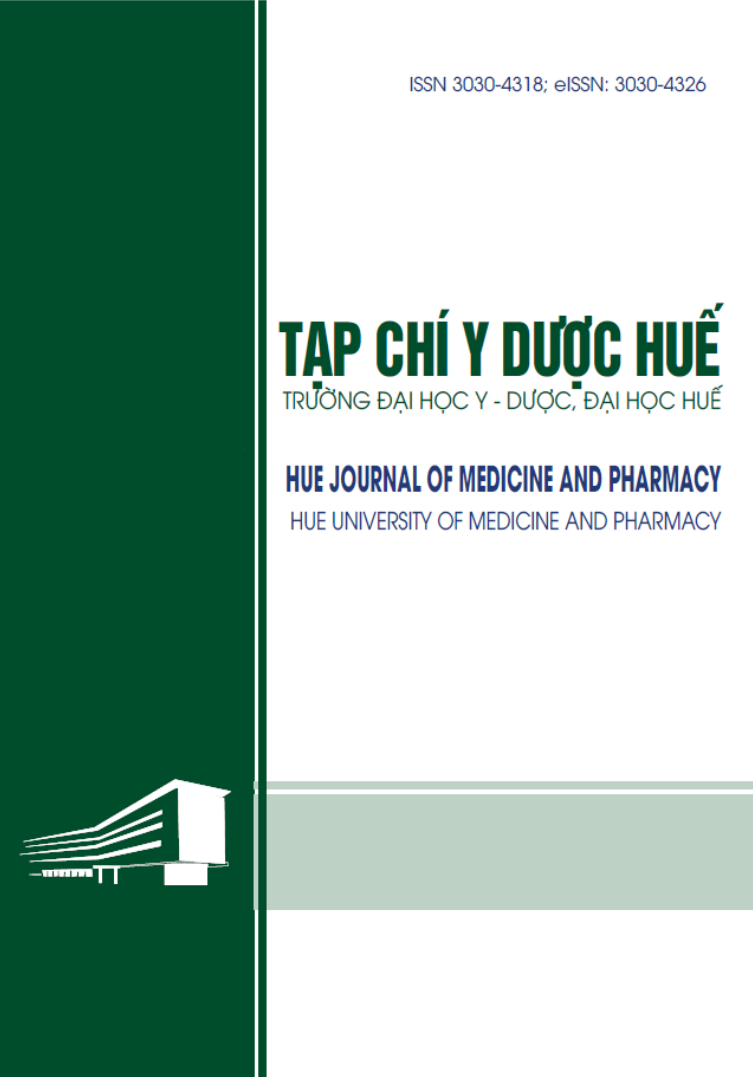Abstract
Objective: Study on the relationship between HbA1c and the extent of coronary artery damage in patients with acute MI on DSA coronary angiography.
Methods: Cross-sectional descriptive study on 150 patients with acute MI who underwent percutaneous coronary angiography at Nghe An General Friendship Hospital from February 20024 to May 2024.
Results: The most common risk factor in the study group was hypertension (76.7%), the rate of diabetes in the study group was 32.7%. Mean HbA1c in the left coronary artery (LCA), circumflex artery (LCX), and right coronary artery (RCA) branches with stenosis ≥ 70% was also higher than the mean HbA1c in these branches with stenosis < 70% (p < 0.05). In patients with 3-vessel stenosis, the mean HbA1c was 8.16 ± 2.05%, higher than that in patients with 2-vessel and 1-vessel stenosis, which were 6.24 ± 1.8% and 6.03 ± 1.5%, respectively (p < 0.05). There was a positive correlation between HbA1c and the degree of LAD stenosis (r = 0.26; p = 0.01).
Conclusion: High HbA1c levels are associated with the degree of severe coronary artery stenosis in patients with acute myocardial infarction in diabetic and non-diabetic.
| Published | 2025-06-25 | |
| Fulltext |
|
|
| Language |
|
|
| Issue | Vol. 15 No. 3 (2025) | |
| Section | Original Articles | |
| DOI | 10.34071/jmp.2025.3.1 | |
| Keywords | nhồi máu cơ tim cấp, động mạch vành, HbA1c, đái tháo đường Acute myocardial infarction, coronary artery, HbA1c, Diabetes |

This work is licensed under a Creative Commons Attribution-NonCommercial-NoDerivatives 4.0 International License.
Copyright (c) 2025 Hue Journal of Medicine and Pharmacy
Bộ Y tế (2019). Quyết định 2187/QĐ-BYT ngày 03/6/2019 của Bộ trưởng Bộ Y tế về việc ban hành tài liệu chuyên môn “Hướng dẫn chẩn đoán và xử trí hội chứng mạch vành cấp”.
Thygesen K., Alpert J.S., Jaffe A.S. et al. Fourth Universal Definition of Myocardial Infarction (2018). Circulation, 138(20), e618–e651.
Shu-Hua Mi, Gong Su, Zhao Li, et al. Comparison of glycemic variability and glycated hemoglobin as risk factors of coronary artery disease in patients with undiagnosed diabetes. Chin Med J (Engl) 2012 Jan;125(1):38-43.
Konstantinou D.M., Chatzizisis Y.S., Louridas G.E., Parcharidis G.E., Giannoglou G.D. Non-diabetic hyperglycaemia correlates with angiographic coronary artery disease prevalence and severity. Diabetes Metab. 2010 Nov;36(5):402-8. doi: 10.1016/j.diabet.2010.04.005. Epub 2010 Jul 1.
Jae-Joon Kim, Ji-Hoon Kang, Ja-Jun Goo, et al. Assessment of the Association between Mean Hemoglobin A1c Levels for 5 Years and Coronary Artery Disease by Coronary Angiography in Nondiabetic Patients. Diabetes Metab J. 2014 Feb;38(1):58-63. doi: 10.4093/dmj.2014.38.1.58. Epub 2014 Feb 19.
Tuấn N.V. và Phương P.H. (2021). Một số đặc điểm lâm sàng, cận lâm sàng và kết quả chụp động mạch vành qua da ở bệnh nhân nhồi máu cơ tim cấp. Tạp chí Y học Việt Nam, 2021, tập 502, số 1.
Văn Sơn N. và cộng sự (2023). Đặc điểm lâm sàng và một số yếu tố liên quan ở bệnh nhân nhồi máu cơ tim cấp có đái tháo đường Type 2 tại Bệnh viện Hữu nghị Việt Tiệp năm 2022 - 2023. Tạp chí y dược Thái Bình, 2023, tập 2, số 9.
Nathan DM, Genuth S, Lachin J, et al. The effect of intensive treatment of diabetes on the development and progression of long-term complications in insulin-dependent diabetes mellitus. N Engl J Med. 1993;329:977–986. doi: 10.1056/NEJM199309303291401.
Samad Ghaffari, Farhad Niafar, Ahmad Separham, Mitra Niafar, Leili Pourafkari and Nader D. Nader. Association between HbA1c levels with severity of coronary artery disease and short-term outcomes of acute ST-elevation myocardial infarction in nondiabetic patients. Ther Adv Cardiovasc Dis 2015, Vol. 9(5) 305–313. DOI: 10.1177/1753944715585500.






